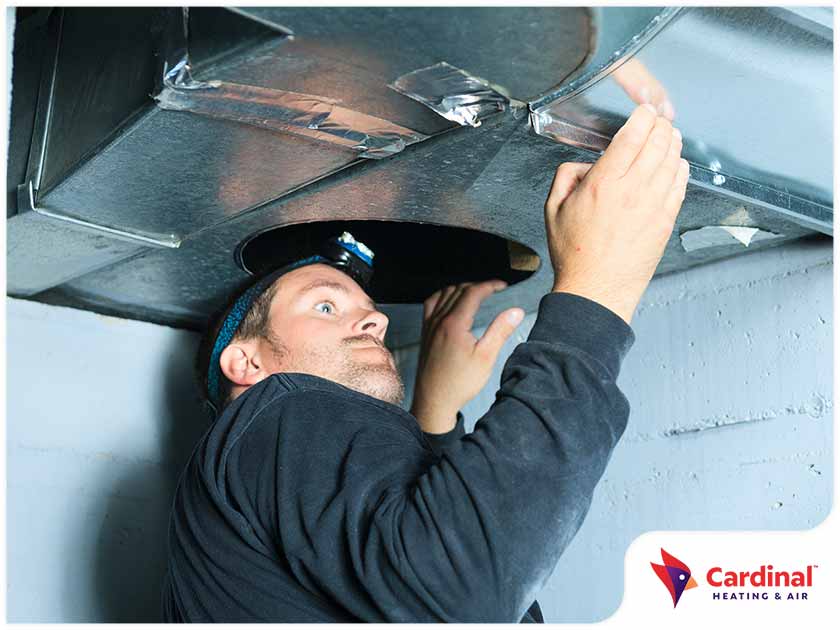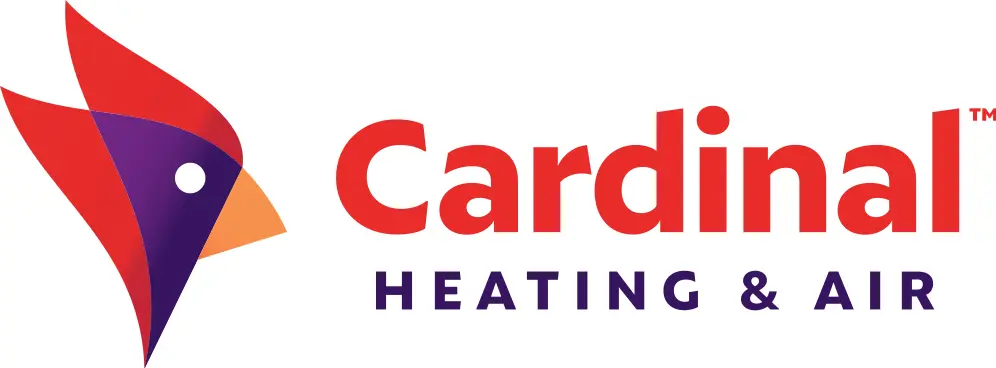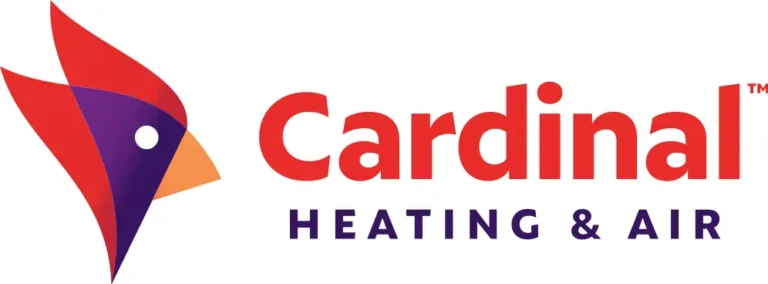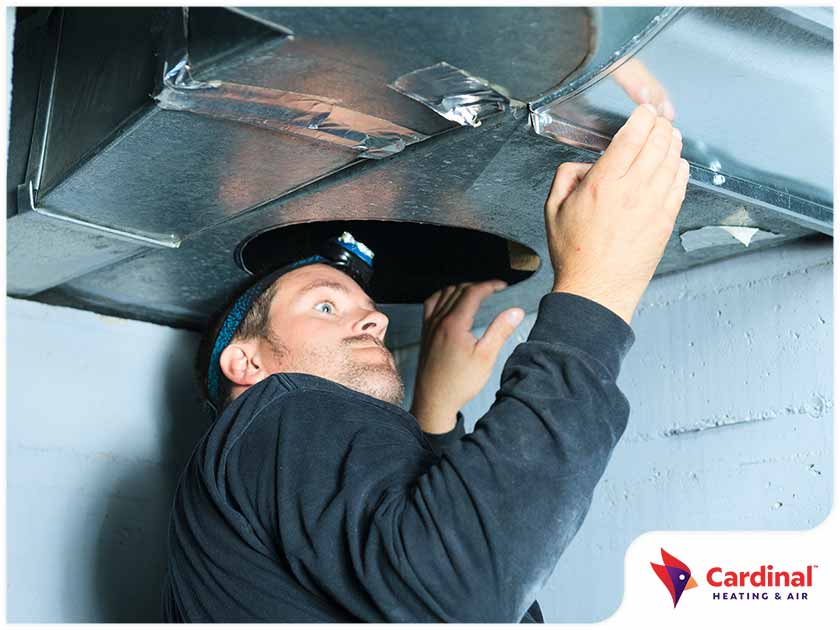A certified HVAC technician who is either installing a new heating and cooling equipment or diagnosing problems with your current system may take a look at its static pressure. It is one of the most important factors in HVAC design, and it gives professionals an idea of a home comfort system’s overall health and performance.

But what is it exactly and why is it important? Cardinal Heating & Air, your local source of HVAC and indoor air quality products and services, takes an in-depth look at static pressure in HVAC systems.
What is Static Pressure in HVAC Systems?
The concept of static pressure falls under fluid mechanics, which is a discipline branching out from physics. Technically, it refers to the amount of pressure measured in inches of water when air moves through an object. In the context of heating and cooling systems, it pertains to the resistance against the flow of air through the internal components and ductwork. Air moving through the HVAC system must be greater than the resistance to the flow; otherwise, no air will circulate throughout the ducts.
Measuring static pressure in HVAC systems is like measuring blood pressure. A 120/80 reading means your cardiovascular health is in good shape. However, if it starts to creep up high up to 140/90, then you have high blood pressure. The same goes for static pressure, but it is expressed in inches of water. A 0.5” reading corresponds to a blood pressure of 120/80, which is right where HVAC systems should be. A 1.0” reading, however, indicates excess airflow restriction pressure in the equipment by a factor of 2. This is equivalent to a blood pressure reading of 240/160, which is ridiculously high!
Simply put, an HVAC equipment with a high static pressure won’t operate as efficiently as it should, much like the human body’s cardiovascular system. But how can you tell if your heating and cooling system has high static pressure?
Symptoms of High Static Pressure
Several signs point to a possible static pressure problem in your HVAC system. If you notice any of them, get in touch with your local heating and air conditioning repair contractor for proper diagnosis. The following are indicators of high static pressure:
- Increase in Energy Bills – An HVAC system with correct, balanced pressure works efficiently to provide consistent indoor comfort. If you notice your monthly energy bills steadily increasing without a clear cause, you need to have the unit checked by an HVAC technician—it could be suffering from high static pressure.
- Uneven Indoor Temperatures – Hot and cold spots in your home are a common sign of high static pressure in your HVAC system. One part of your home might receive too much warm or cool air, while the other part doesn’t have enough of it.
- Too Much Noise – When your HVAC system is distributing conditioned air in your home, you might find that it is quite louder than usual. It is a sign of higher static pressure. Here, air moves through the system’s return grille, ducts and vents faster than normal. Because of decreased airflow, the unit’s blower motor has to work twice as hard to move air through it. You hear the loud noise because it is running at maximum speed.
Possible Culprits
During HVAC maintenance, the contractor will check the static pressure of at least two locations within the entire system. In doing so, the technicians can narrow down where the resistance is happening. The following are some of the potential causes of high static pressure:
- Poor Ductwork Design – Badly designed or incorrectly installed ducts are either too narrow or have too much bending, dipping or sagging, creating airflow resistance.
- Dirty Ducts – Clogged ductwork also creates airflow resistance that leads to high static pressure. Too much dust and debris make the inside of the ducts narrow, preventing balanced air movement.
- Too Small Return Air Intake – An undersized return air intake makes it much more difficult for the blower motor to draw air into the system. The problem becomes apparent when a new HVAC system is installed or ducts are repaired and sealed.
- One-Inch Pleated Filter – The standard one-inch pleated filter in HVAC systems can create a significant airflow restriction. The thicker it is, the greater the resistance. A better alternative would be to use a media filter with a low-pressure drop, install UV lights near the supply ducts or upgrade to a high-efficiency particulate air (HEPA) filter.
Low Static Pressure
If you think high static pressure is a problem, then so is its exact opposite. It rarely happens, but low static pressure in HVAC systems can mean either one of two things. On the one hand, you might have made improvements to bolster your home’s energy efficiency. Certain home upgrades aim to tighten your home envelope and achieve energy savings. However, if your ductwork is still the same, then you might have a hard time maintaining comfort levels. On the other hand, the trunk line of your heating and cooling equipment might be oversized.
Either situation will result in airflow that isn’t strong enough to ensure consistent distribution of conditioned air. One side of your home is warm while the other side is cold. Your HVAC contractor may recommend redesigning and reinstalling your ductwork to ensure balanced airflow.
Working With the Pros
Even with the symptoms listed above, measuring static pressure in your HVAC system requires the use of special equipment and some professional experience. This is one reason why it is a vital component of a typical maintenance agreement. Every time the contractor visits your home for a scheduled inspection, the pros will take new readings and compare them with the previous ones.
At Cardinal Heating & Air, our maintenance program can help prevent your HVAC system from suffering breakdowns and ensure its optimum efficiency even as it nears the end of its service life. With these, you can get preferential scheduling, a reduced rate for 24/7 emergency service, automatic regular inspections once or twice a year, and peace of mind knowing that your unit’s factory warranty remains valid.
Count on us for your heating and cooling products, including water heaters, heat pumps and ductless systems. Give us a call today at (425) 827-9997 or fill out our contact form to request an estimate.


